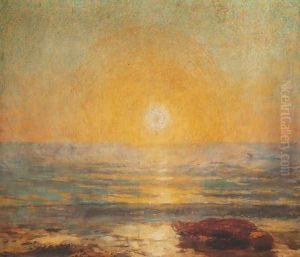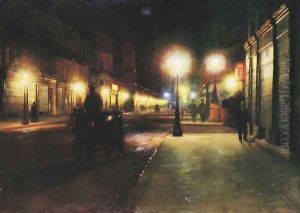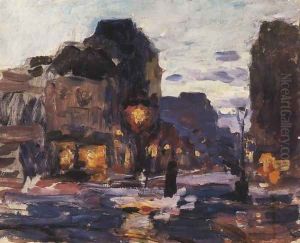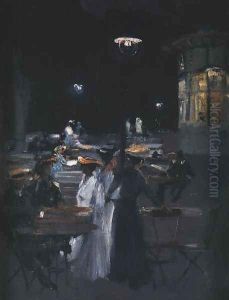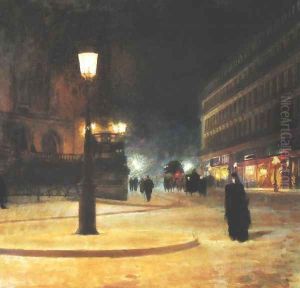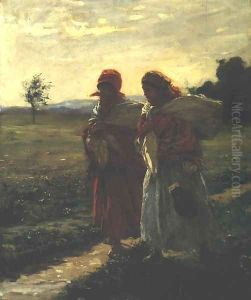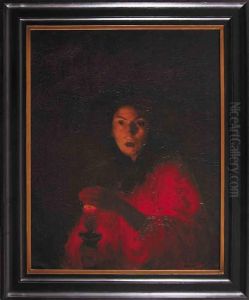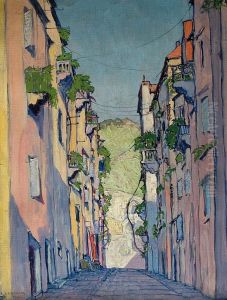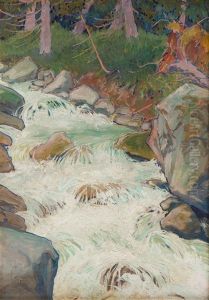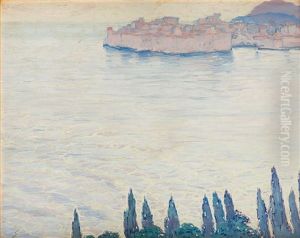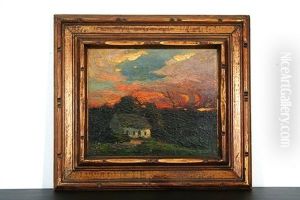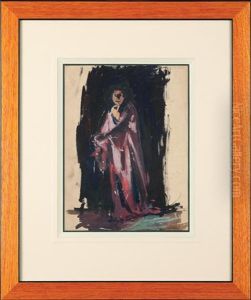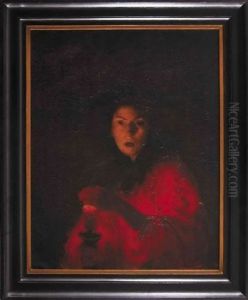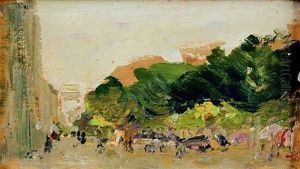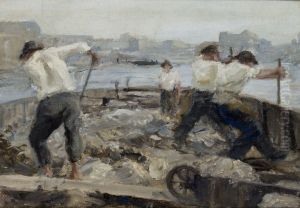Ludwik de Laveaux Paintings
Ludwik de Laveaux was a Polish painter born on December 17, 1868, in Płonne, a small village in the then Russian-partitioned Poland. His artistic inclination was evident from a young age, and he pursued his passion by studying at the School of Fine Arts in Warsaw. However, his education in Warsaw was just the beginning, as he would continue his studies abroad, which was a common practice among Polish artists of the time, seeking the finest European art education.
De Laveaux's next significant educational chapter took him to Paris, France, the epicenter of the art world in the 19th century. There, he attended the renowned Académie Julian, a private art school where many foreign students gathered to learn from the masters of the era. During his time in Paris, de Laveaux was heavily influenced by the French Impressionists and Post-Impressionists, as well as by the Symbolist movement. His style was characterized by a delicate use of color and a focus on atmospheric effects, as well as an interest in capturing the ephemeral moments of everyday life. These elements can be seen in his depictions of Parisian scenes, landscapes, and portraits.
Despite his promising start and the talent he exhibited, Ludwik de Laveaux's life and career were tragically short. The artist's health was fragile, and he struggled with a respiratory illness. His condition prompted him to move to the French Riviera in search of a more suitable climate that could potentially improve his health. It was during this period that he created some of his most poignant works, characterized by a softer palette and an exploration of the play of light typical of the Riviera's sun-drenched landscape.
Unfortunately, Ludwik de Laveaux's life came to an untimely end at the young age of 25. He died on March 29, 1894, in Cannes, France. Although his career was brief, de Laveaux left behind a body of work that continues to be appreciated for its beauty and sensitivity. His paintings can be found in various collections and museums, and he remains a notable figure in the history of Polish art, often remembered for his contributions to the late 19th-century art scene and the poignancy of his work, created in the shadow of his impending early demise.
